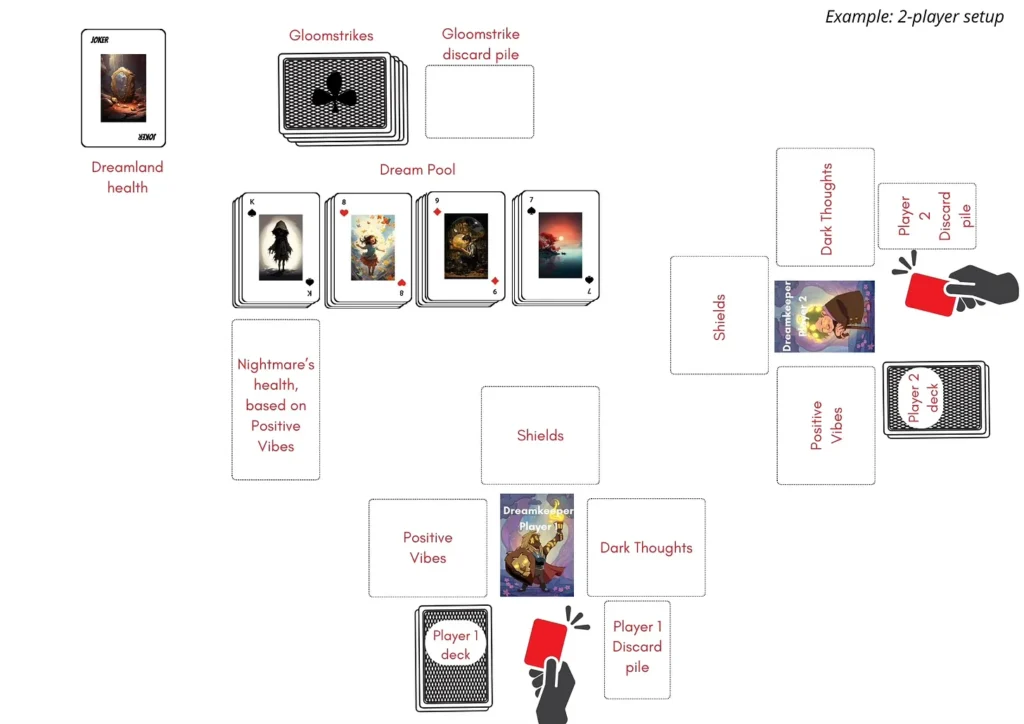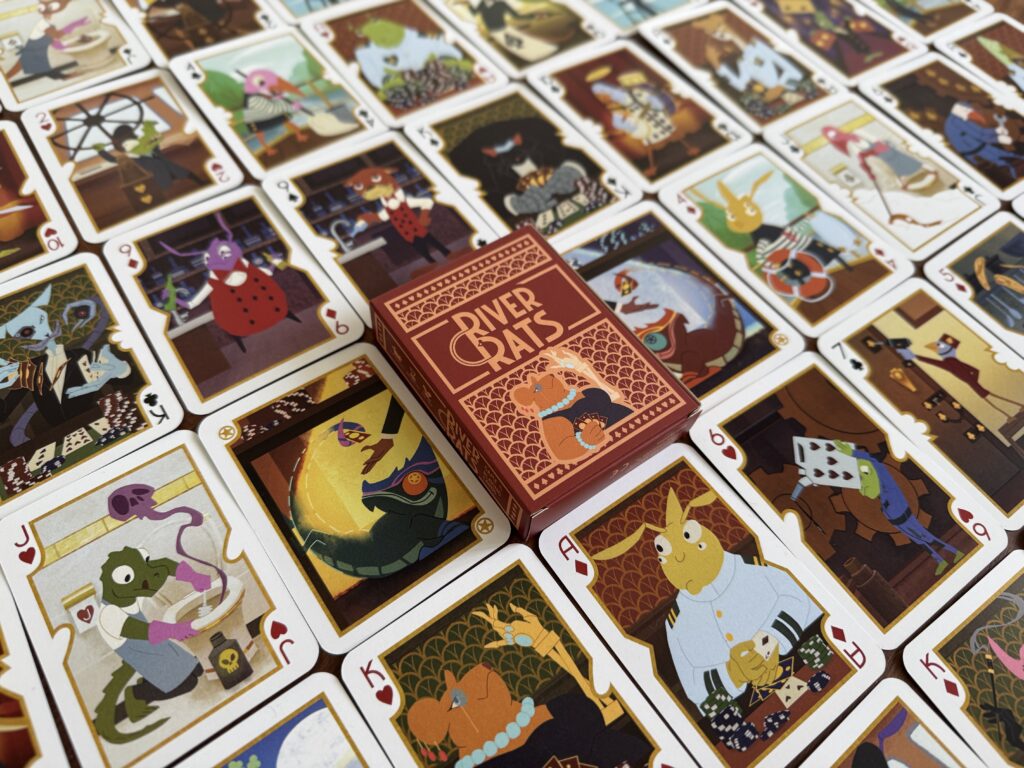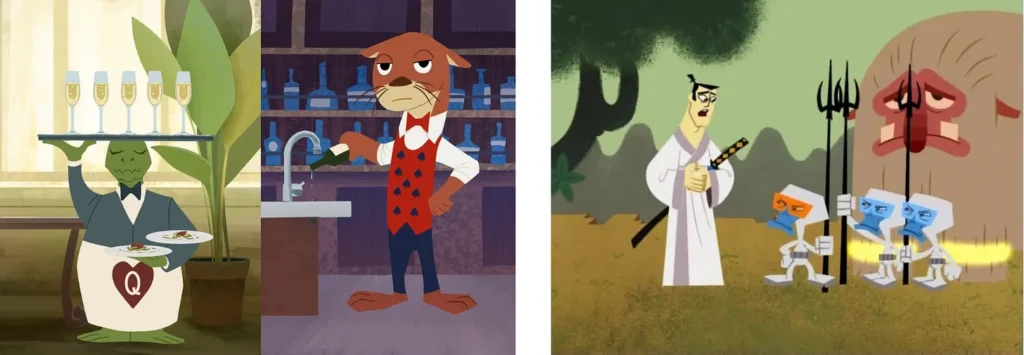The previous article outlined how River Rats was designed from the lead designer’s perspective, Mathijs Jansen. But here is the same story, but now from my perspective. If want to know about marketing the campaign, check this article.
I wanted to make a game that I could play with my girlfriend and her family. We love to play Harry Potter: Hogwarts Battle, especially the feeling of team spirit and accomplishing something together. I personally also enjoy the high player interaction and impactful decisions. This was the experience what I wanted to invoke with my next game design.
Brainstorming & Constraints
While still brainstorming about the set-up of the game, I came across Regicide. A cooperative boss battler which can be played with a standard deck of playing cards. I was really excited – and still am – about the accessibility of the concept. Anyone can play it, anywhere. And if you want to support the project or would like to buy a thematic version, you can.
That inspired me to create a game that you can also play with a regular deck of cards, but my game should provide a completely different gameplay experience.
I also strongly believe in the power of constraints. A limitation like “only 52+2 cards” is incredibly helpful in game design. It forces you to make choices and helps you stay focused.
I knew I wanted to create a cooperative boss battler. At first, I considered a cooperative version of Pokémon TCG, but with regular playing cards. Then I played around with the idea of Marvel: A Deck Building Game, where you have to defeat enemies in a row before they reach the end. But in the end, I decided to stay closer to the feel of Hogwarts Battle.
That’s how Dream Guardians was born. It was a deckbuilder for 1–4 players. The players found themselves in a dream world as ‘virtues’ and had to work together to defeat nightmares. Each turn, you’d draw a card from the nightmare deck. If it was an enemy, you had to defeat it together before it defeated you.

Playtesting
I playtested it many times, solo and with other game designers or with friends. That’s how I learned Dream Guardians turned out to be interactive, but also was it too difficult to win, hard to explain, too much going on on the table, and did it give too few meaningful choices.
After a year of trying out, I asked Mathijs, a regular to my game design meetups who kept playing the game and giving me brutal feedback, to help me make something good, with the desired experience and constraints.

New design
He designed a new core game engine, and we called the game Jokerface for the time being. There was no theme yet, and Mathijs really liked the name. He came up with the idea of building poker hands in a cooperative manner. Players play cards to form a collective hand, trying to beat the bad guys. This proved to be a solid core loop to build upon.
The game comes with limited information and communication about the hands. At first, player feedback was it was missing a feeling of true collaboration. To fix this, we came up with a ‘prediction’; if you managed to build a specific poker hand (e.g. a flush), you would unlock a powerful Joker. This helped to give direction to players for each new hand, and it also provided a good tool to counteract some of the chance.
We then introduced specific suit powers to add more depth and spice to the game. After trying a million variations, we decided on the best ones: when playing a ♥️ -card players can raise the stakes, playing a ♦️ allows for swapping, ♠️ gives you the option to discard cards you don’t need, whilst ♣️ provides the opportunity to add cards to the Market.
Theme

Only once the core mechanics worked did we start thinking about the theme. Choosing a theme isn’t a separate step, it’s a back-and-forth between mechanics and your game’s goals. We needed to make sure that we could answer the below questions positively:
- Does the theme match the feel of the game? If your game is about tension and secrets, a cheerful carnival setting might not work.
- Can the theme be supported visually and narratively? Does it inspire artwork, characters, situations?
- Can the theme help players understand the game? A strong theme can make the rules more intuitive.
I wanted to include a hierarchy in card values (e.g. an 8 is higher than a 2), to match with the poker-like mechanics. So I looked for a world where that hierarchy made sense. I also needed uniformity within each suit, because each had its own unique action. And I wanted cards of the same value to belong together, for example, all nines are waiters. That would make the poker combinations (e.g. four waiters would work well together) feel more logical.
That’s how River Rats came to be: wealthy guests of a river cruise, the robotic River Rats force the crew to play high stakes poker. You are the crew, trying to beat them. The crew is made up of four factions, each with its own style, actions, and personality. Think:
- Crocodiles ♥️: fearless and dominant, they raise the stakes.
- Otters ♠️: sly and agile, they sneak cards away.
- Insects ♦️: swap, manipulate, and change positions.
- Birds ♣️: build on each other and strengthen the shared hand.
Each card value represents a specific role within the crew, from the boatswain to the waiter. This creates a world where theme, action, and role all logically connect.
Artwork and Worldbuilding

During the design process, I drew a lot of inspiration from the animated series Samurai Jack. Its style – minimalist, colorful, cartoonish, and slightly surreal – really spoke to me. I wanted to capture that same atmosphere in River Rats: a bizarre yet familiar world where characters are iconic and visually distinct.
In my game, the world is set aboard a futuristic river cruise, where animals and humans live together under the strict rule of the wealthy elite, the River Rats. The crew is made up of anthropomorphic animals, each with their own style and personality. The world is familiar, yet strange; humorous, but with an edge of critique.
These stylistic choices not only make the game visually appealing, but also support the gameplay. Players recognize factions, understand actions, and feel more connected to the world. I decided to work with Rixt Heerschop, who also illustrated my earlier game Monsters of Loch Lomond. I knew she was perfect for the job!
And that’s how River Rats was designed!
If you want to know how I marketed River Rats continue reading.
